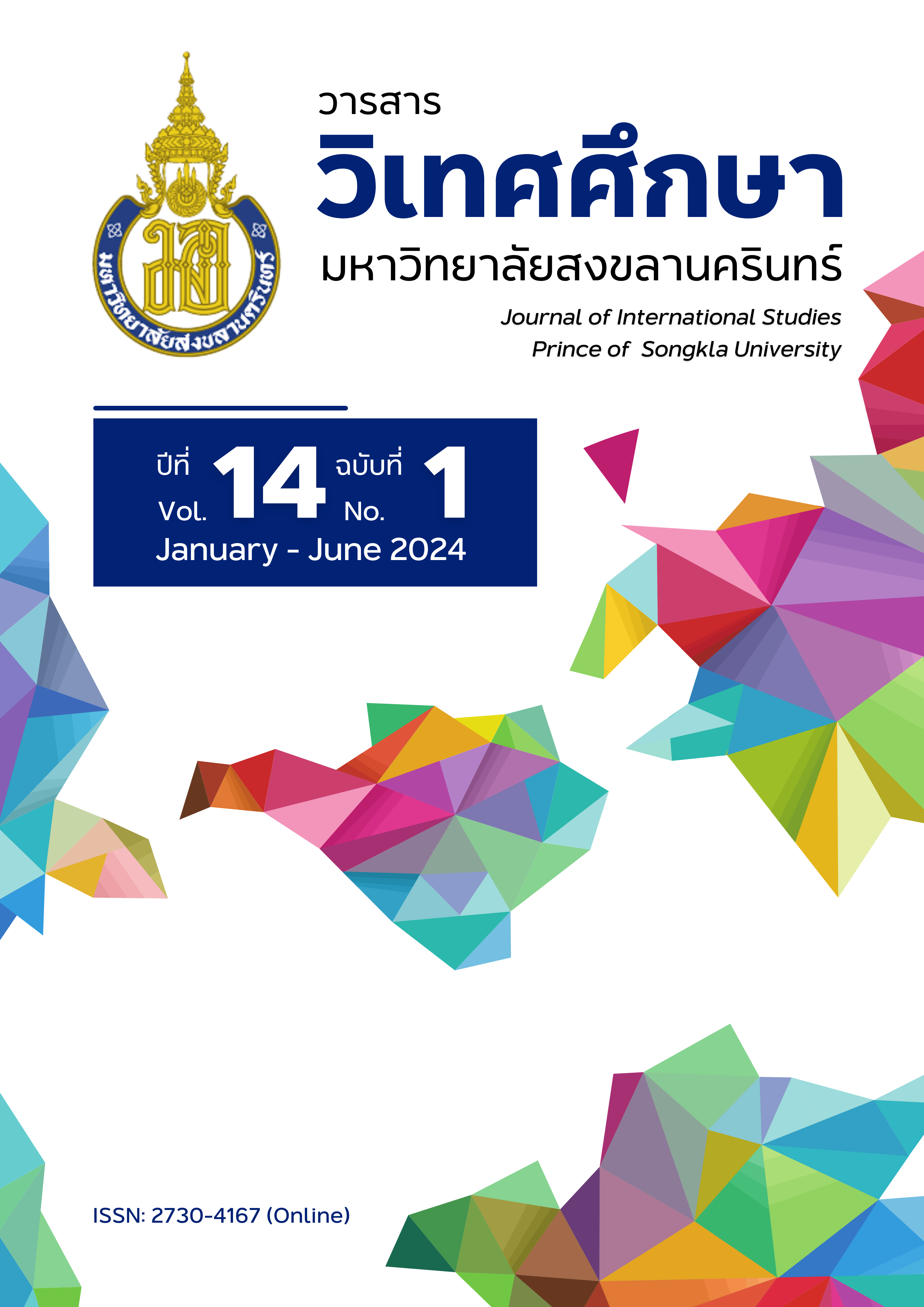The Acceptance of Thai Consumers towards Thai Green Label Appliances Products
Main Article Content
Abstract
The purposes of this research were: 1) To study the opinions of Thai consumers about the adoption process of Electrical Green Label Products; and 2) To compare the levels of opinions through the adoption process of the products classified by demographic background of consumers and their green consumer behaviors. This quantitative study used the survey method with 400 Thai consumers throughout the country, and using multi-stages random sampling. The questionnaire was approved by testing validity (IOC = 0.79) and reliability (Alfa= 0.87- 0.91). Descriptive statistics were used for analysis, and tested hypotheses by t-test and F-test, and continued testing with LSD when the differences were found. The main findings revealed 1) The adoption process of the products were 1) Awareness stage: consumers knew the products at moderate level. 2) Interest stage: consumers paid attention at high level. 3) Evaluation stage: consumers evaluated at high level. 4) Trial stage: consumers tried at high level
and 5) Adoption stage: consumers accepted the products at high level; and (2) Comparisons of the opinions of consumers through the adoption process found that 1) Consumers who had different genders had different opinions about awareness. Male had higher awareness level than female. Consumers who had different ages had different opinions in adoption stages. Consumers who had ages more than 46 years old had higher adoption level than 26-35 years old consumers. 2) Consumers who had different green products consumption behaviors had different adoption process in awareness stage, interest stage and adoption stage at 0.05 level of significance. The conventional green had less awareness and less acceptance than the active green and the drifter green. Then, it is recommended that the producers should provide knowledge and understanding about green label electrical products through personal selling and social media, along with participating in the green products exhibition at national level to gain more acceptance from consumers.
Article Details

This work is licensed under a Creative Commons Attribution-NonCommercial-NoDerivatives 4.0 International License.
Statements and opinions expressed in articles herein are those of the authors and do not necessarily reflect the position of the editors or publisher.
Article, information, text, image, etc. which are published in Journal of International Studies, belong to Journal of International Studies. If anybody or any organization would like to use part or whole of them, they must receive written permission from Journal of International Studies before usage.
References
กรมควบคุมมลพิษ กระทรวงทรัพยากรธรรมชาติและสิ่งแวดล้อม. (2566). แผนปฏิบัติการด้านการจัดการขยะของประเทศ ฉบับที่ 2 (พ.ศ. 2565 – 2570). https://www.pcd.go.th/wp-content/uploads/2023/02/pcdnew-2023-02-20_06-35-59_190336.pdf
กรมส่งเสริมคุณภาพสิ่งแวดล้อม. (2561). รายงานผลการวิเคราะห์การสำรวจและเก็บรวบรวมข้อมูลภาคสนามโครงการศึกษาพฤติกรรมผู้บริโภคในการบริโภคสินค้าที่เป็นมิตรกับสิ่งแวดล้อมในพื้นที่กรุงเทพมหานคร. http://www.oic.go.th
ชุติมา มุสิกะเจริญ. (2565). ศูนย์วิจัยกสิกรฯ เผยผลสำรวจพฤติกรรมของผู้บริโภค ต่อปัญหาด้านความยั่งยืนของสิ่งแวดล้อมและการลงทุนด้าน ESG. สำนักข่าวอีไฟแนนซ์ไทย. https://www.efinancethai.com/LastestNews/LatestNewsMain.aspx?ref
ธนาคารกรุงเทพ. (2022). แม้ราคาสูงขึ้นก็ยอม เจาะลึกพฤติกรรม ‘ผู้บริโภค’ พร้อมจ่ายเพื่อสินค้ารักษ์โลก SME ปรับตัวอย่างไรไม่ตกเทรนด์. https://www.bangkokbanksme.com/en/expensive-and-willing-to-pay-for-environmentally-friendly-products
ธำรงรัตน์ มุ่งเจริญ. (2564). พลังของคนรุ่นใหม่กับการขับเคลื่อนสู่วิถีชีวิตที่ยั่งยืน. สัมมนาออนไลน์. https://teams.live.com/meet/95725915160323
นิสากรณ์ แสงประชุม. (2564). รู้รักษ์สิ่งแวดล้อม เพื่อหยุดส่งต่อมรดกมลพิษ. สถาบันส่งเสริมการสอนวิทยาศาสตร์และเทคโนโลยี (สสวท.). https://www.scimath.org/article-science/item/12411-2021-08-23-05-59-36
ปัญจ์ปพัชรภร บุญพร้อม. (2010). เครื่องมือสำหรับการจัดการสิ่งแวดล้อมอย่างยั่งยืน. วารสารสุทธิปริทัศน์, 24(73), 169-184. https://so05.tcithaijo.org/index.php/DPUSuthiparithatJournal/article/view/246116
พสิสฐ์ ทองมิตร. (2563). แนวทางการพัฒนาฉลากเขียวของกลุ่มผู้มีส่วนได้เสียตามหลักการพัฒนาอย่างยั่งยืน. วารสารสืบเนื่องการประชุมวิชาการระดับชาติ วิทยาลัยราชสีมา ครั้งที่ 7, 11(1). 369-378. http://journal.nmc.ac.th/th/admin/Journal/2563Vol11No1_40.pdf
ลัณฉกร ประทุมรัตน์. (2555). ฉลากเขียว ฉลากสิ่งแวดล้อมของไทย. ศูนย์ความเป็นเลิศด้านการจัดการสารและของเสียอันตราย. http://www.chemtrack.org/NewsDetail.asp?TID=7&ID=719
วิจารย์ สิมาฉายา. (2566). จับตาสิ่งแวดล้อมโลกและสิ่งแวดล้อมไทย ปี 2566. สถาบันสิ่งแวดล้อมไทย. https://www.tei.or.th/th/article_detail.php?bid=119
วิทยาลัยการจัดการ มหาวิทยาลัยมหิดล. (2563). Voice of Green: เพื่อโลก เพื่อเรา. E-book สัมมนาการตลาดโลกสวย. http://bit.ly/2QI6kOl
ศูนย์วิจัยกสิกรไทย. (2565). ผลสำรวจพฤติกรรมและมุมมองของผู้บริโภคที่มีต่อปัญหาความยั่งยืนด้านสิ่งแวดล้อม และแนวโน้มความสนใจลงทุนด้าน ESG. https://www.kasikornresearch.com/th/analysis/k-econ/business/Pages/ESG-consumer-z3337.aspx
สถาบันสิ่งแวดล้อมไทย. (2564). คู่มือแนะนำฉลากเขียว. http://www.tei.or.th/file/library/book-Greenlabel_40.pdf
สำนักงานเลขานุการของคณะกรรมการยุทธศาสตร์ชาติ. (2561). ยุทธศาสตร์ชาติ พ.ศ. 2561 - 2580 (ฉบับย่อ). https://www.nesdc.go.th/download/document/SAC/NS_SumPlanOct2018.pdf
Cheung, R., Lam, A.Y.C., & Mei, M. L. (2015). Drivers of green product adoption: the role of green perceived value, green trust and perceived quality. Journal of Global Scholars of Marketing Science, 25(3). 232-245. https://doi.org/10.1080/21639159.2015.1041781
Cochran, W.G. (1977). Sampling Techniques (3rd ed.). New York: John Wiley & Sons Inc.
Muangtum, N. (2020). Voice of Green การตลาดโลกสวย เทรนด์รักษ์โลก 2020 จาก CMMU. https://www.everydaymarketing.co/trend-insight/voice-of-green-marketing-cmmu-eco-trend-2020/.
Nath, V., Kumar, R., Agrawal, R., Gautam, A. & Sharma, V. (2013). Consumer Adoption of Green Products: Modeling the Enablers. Global Business Review, 14(3). 453–470. https://doi.org/10.1177/0972150913496864
Nittala, R. & Moturu, V. R. (2023). Role of pro-environmental post-purchase behaviour in green consumer behavior. Vilakshan - XIMB Journal of Management, 20(1), 82-97. https://www.emerald.com/insight/content/doi/10.1108/XJM- 03-2021-0074/full/html
Riserbato, R. (2021, November 26). What is Customer Adoption & How Can You Increase Your Customer Adoption Rate. Hubspot. https://blog. hubspot.com/service/customer-adoption
Sewwandi, J. P. N. & Dinesha, P. K. C. (2022). The impact of green marketing tools on green product purchase behavior: the moderation effect of consumer demographics. Asian Journal of Marketing Management (AJMM), 01(01), 89-114. https://doi.org/10.31357/ajmm.v1i01.5469


